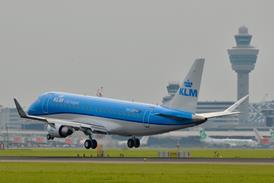The US Army will soon launch a process that will select two companies to compete for a contract to develop an infrared countermeasure system that will be installed on thousands of helicopters.
A request for proposals is expected by industry observers to be released in October for the common infrared countermeasures (CIRCM) contract, which could be worth billions of dollars as the programme spreads to the US Navy and the foreign market.
The competition is shaping up as a battle between incumbents and newcomers.
BAE Systems and Northrop Grumman have dominated the market for directed infrared countermeasures (DIRCM) since it emerged in the past decade.
But the army wants a cheaper, lighter and more capable system for helicopters than Northrop's large aircraft system (LAIRCM) for the US Air Force and navy and BAE's advanced threat system (ATIRCM) for the army's Boeing CH-47 Chinooks.
Sensing an opportunity to capture market share with the CIRCM programme, both ITT and Raytheon have entered the IRCM market during the last five years with new technologies.
ITT's approach relies on integrating advanced components developed by the Air Force Research Laboratory over the previous decade. Raytheon, meanwhile, has adapted the seeker from its AIM-9X Sidewinder air-to-air missile into a potentially low-cost and lightweight option for CIRCM called Quiet Eyes.
But the companies have faced questions about their decision to replace electrical wiring with fibre-optic cables, which are lighter weight and more powerful but remain unproven as a mature, reliable technology.
"If you're trying to save weight that's the way to go," says Raytheon vice-president of advanced security and directed energy systems Mike Booen. "There has been some unsuccessful attempts. Fortunately we've been more successful than efforts in the past. We've tested the heck out of it. There were concerns out there about the fibre approach. We feel like we've got some data that proves otherwise."
In reliability tests staged last year by the army, ITT acknowledged discovering problems with the fibre-optic technology. Over the past nine months, it believes it has fixed those problems, which involved production glitches rather than the core technology, company officials say.
"We did not lose our confidence in the cable," says Bob Lawler, an ITT business development manager. "We just needed a way to produce that cable in a way that was going to be reliable and that was going to be used in the field and was still going to provide the ability to pass energy."
Both Northrop and BAE, meanwhile, are determined not to lose the market to the newcomers.
BAE plans to unveil an advanced system called Boldstroke in late October for the army's CIRCM contract. Although ATIRCM has suffered from delays and reliability concerns, BAE believes the system's deployment this year has eliminated doubts about the performance of the company's IRCM technology.
"It's been received very well by all accounts," says Tom Kirkpatrick, a BAE programme manager for ATIRCM quick reaction capability. "The feedback we've received is very positive."
Northrop has teamed with Selex Galileo, meanwhile, to integrate the Eclipse micro-pointer/tracker with the Viper multifunction laser.
Source: Flight International























